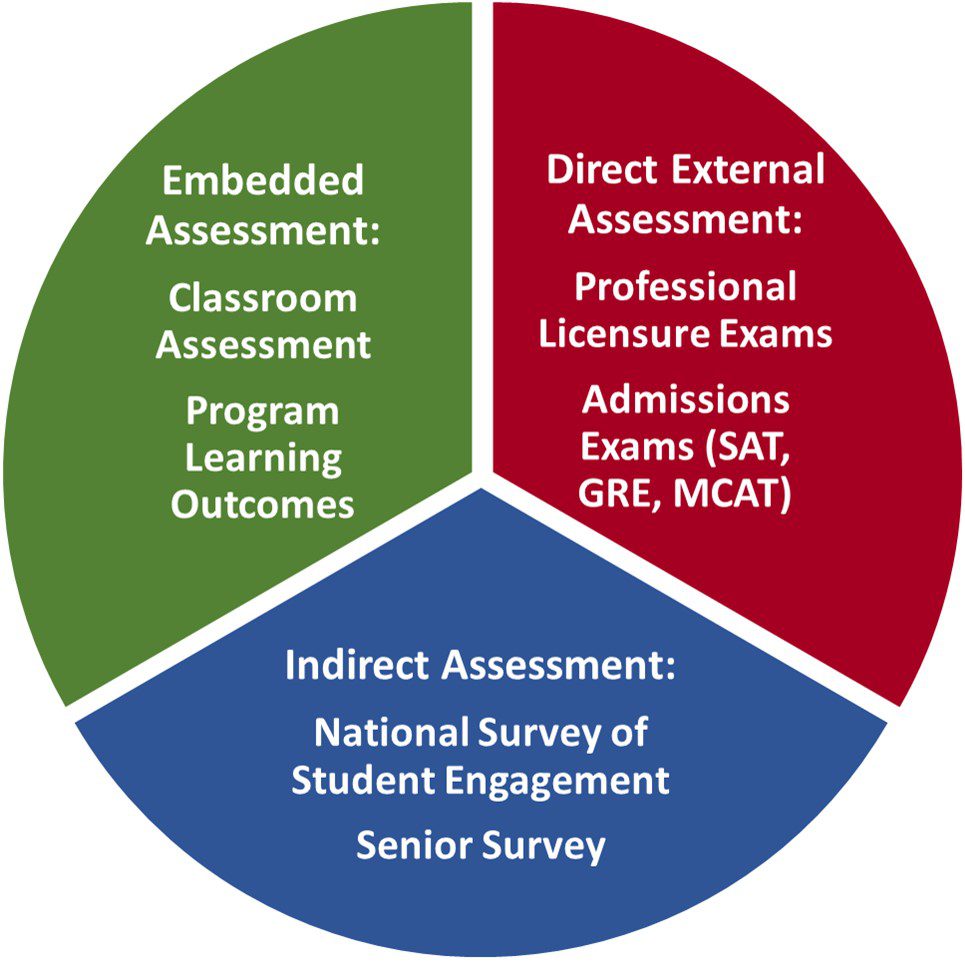Triangulation of Student Learning Outcomes Assessment
How do we know if our students are learning what we want them to learn in our courses and academic programs? We assess our student learning outcomes using multiple methods to determine how well our students are meeting our goals and targets for what knowledge and skills we want students at UNC Charlotte to obtain during their time here. We use a triangulation approach in order to holistically integrate data from multiple sources.
The Triangulation Approach
In the social sciences, the term triangulation of methods is used to refer to instances where 2 or more methods are employed to study the same phenomenon. Research methods all have inherent strengths and weaknesses. Assessment methods are no different. The triangulation approach helps to overcome the inherent weaknesses and biases any one method may have. When multiple methods point to the same conclusion, we can have greater confidence in the accuracy of the conclusion.
Methods for Assessing Student Learning
At UNC Charlotte, our assessment methods portfolio typically includes embedded course and program assessments, direct external assessments, and indirect assessments.

- Embedded assessments: Sometimes referred to as ‘authentic assessments’. Typically this category includes internal, instructor-created course- and program-level assessment plans and resulting data. For specified student learning outcomes, students’ achievement of those outcomes is assessed using students’ performance and grades on various relevant course assignments and exams. A strength of this approach is that the assessment measures are created by faculty and instructors who are experts in their discipline and experts in what students in higher education should know about the discipline. However, the validity and reliability of instructor-created assignments and exams are rarely examined.
- Direct external assessments: This category includes professional licensure exams, standardized exams like the SATs typically used for admissions decisions, or external standardized exams designed to test students’ abilities in a particular domain like quantitative reasoning or critical thinking. Standardized tests often undergo rigorous validity and reliability testing and can often offer comparison group data about how our students are faring compared to students at other institutions. However, standardized exams may be broader or narrower in scope than may be ideal in certain circumstances. Standardized exams are also costly to administer and issues of student motivation while taking such exams must be considered.
- Indirect assessments: Surveys typically fit into this category, although other data sources may also be applicable to this area. Students’ self-reports about their perceived gains in specific academic areas can provide an indirect measure of what students are learning in our classrooms and at our institution. While having insights into students’ perceptions of their abilities can be useful for understanding the student experience of courses and educational programs, self-reports of abilities and skill levels are not always accurate representations of a person’s true capabilites.
Applying the Triangulation Approach
In the Office of Assessment and Acccreditation at UNC Charlotte, we adopt this triangulation approach in our assessment of student learning. We recognize that any one method will have its strengths and limitations. We draw from multiple data sources and assessment methods and look for patterns in what these data are telling us about student learning. This enables us to create richer narratives and draw more confident conclusions about the state of student learning within our institution.